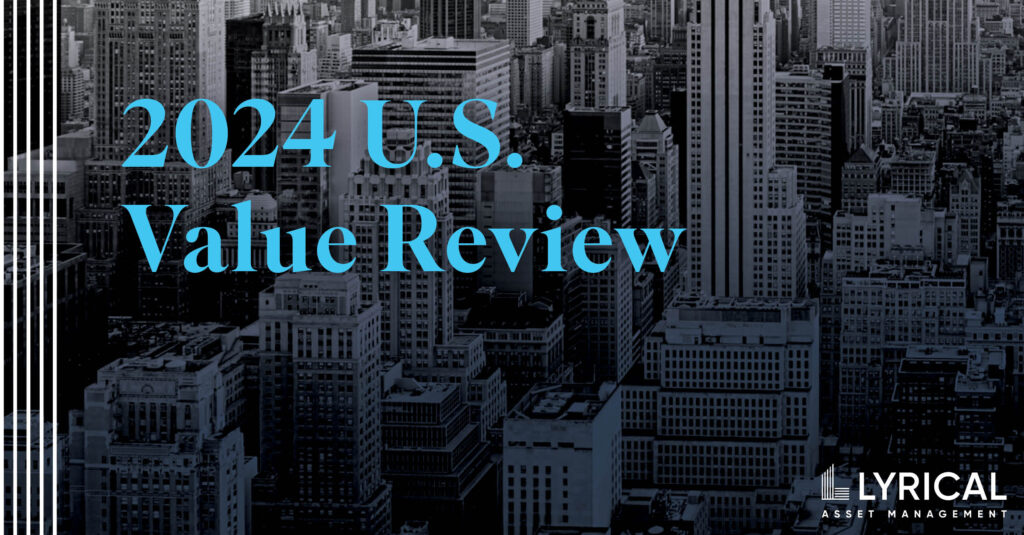Global Strategy Update: Assessing Tariff Risk and Resilience
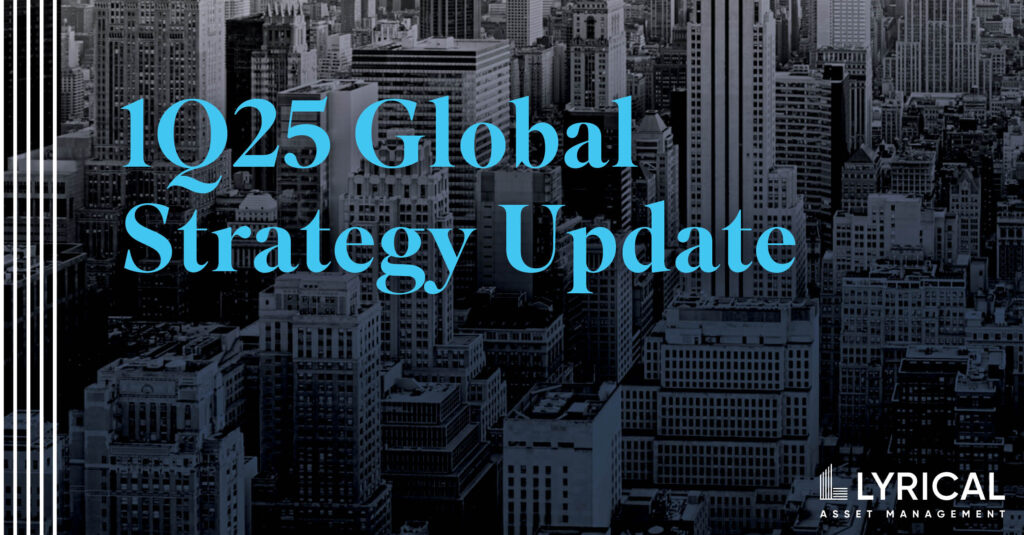
Our Global portfolio delivered a return of 1.7% in the first quarter. This performance outpaced the MSCI World index by 350 bps. In a reversal of the trend of the prior two years, the Magnificent Seven mega-cap growth stocks on average declined by over 15%, dragging down the MSCI World. While we trailed our value style benchmark by 310 bps, we are encouraged by the meaningful outperformance versus the MSCI World benchmark.
The broader market story this quarter was the remarkable strength of markets outside the U.S. While the S&P 500 declined 4.3%, the MSCI EAFE index rose 6.9%, an 11.2 percentage point difference and the widest quarterly spread between the two since Q2 of 2002, nearly 23 years ago.
Non-U.S. markets have been shunned and with reason, given the dominating performance of the S&P 500 over the past 15 years. But in the wake of investors passing over stocks outside the U.S., we’ve found plenty of opportunities. Heading into this year, we had 9 high-quality non-U.S. businesses trading for less than 10x forward earnings and the overall portfolio traded at a P/E of just 11.0x. In the first quarter, we benefited from this extreme valuation potential in non-U.S. stocks, and we believe there is substantially more remaining.
Global Impact Value Equity Strategy (GIVES) Update: Assessing Tariff Risk and Resilience
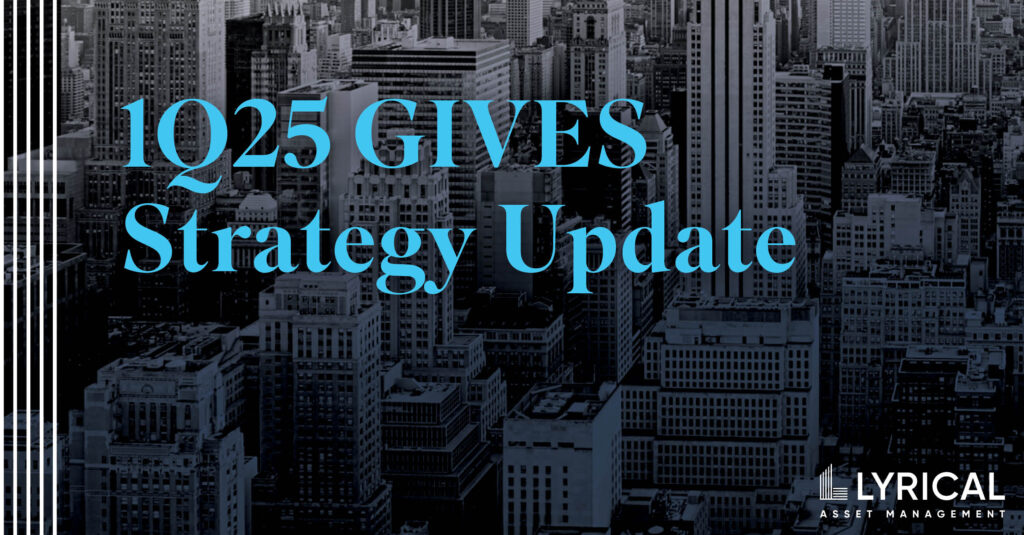
Our Global Impact portfolio delivered a return of 3.9% in the first quarter. This performance outpaced the MSCI World index by 570 bps. In a reversal of the trend of the prior two years, the Magnificent Seven mega-cap growth stocks on average declined by over 15%, dragging down the MSCI World. We also outperformed our style benchmark, the MSCI World Sustainable Impact Index, by 370bps.
The broader market story this quarter was the remarkable strength of markets outside the U.S. While the S&P 500 declined 4.3%, the MSCI EAFE index rose 6.9%, an 11.2 percentage point difference and the widest quarterly spread between the two since Q2 of 2002, nearly 23 years ago.
Non-U.S. markets have been shunned and with reason, given the dominating performance of the S&P 500 over the past 15 years. But in the wake of investors passing over stocks outside the U.S., we’ve found plenty of opportunities. Heading into this year, we had six high-quality non-U.S. businesses trading for less than 10x forward earnings and the overall portfolio traded at a P/E of just 11.8x. In the first quarter, we benefited from this extreme valuation potential in non-U.S. stocks, and we believe there is substantially more remaining.
International Strategy Update: Assessing Tariff Risk and Resilience
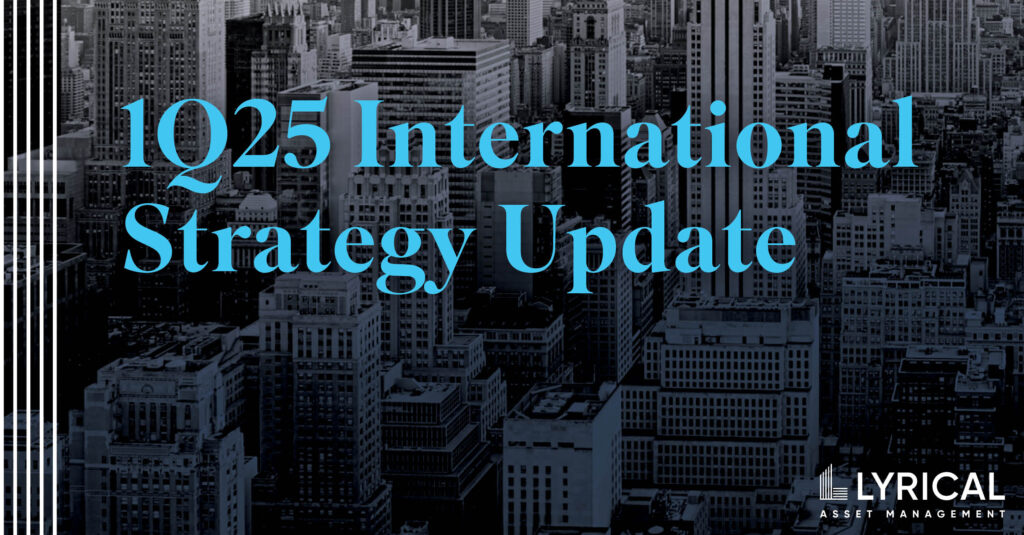
We’re pleased to report that our International portfolio delivered a strong return of 9.0% in the first quarter. This performance outpaced the MSCI EAFE index by 210 bps and beat the MSCI EAFE Equal Weighted index by 280 bps. While we trailed our value style benchmark by 260 bps, we are encouraged by the absolute return and the meaningful outperformance versus broad and equal-weighted international benchmarks.
The broader market story this quarter was the remarkable strength of markets outside the U.S. While the S&P 500 declined 4.3%, the MSCI EAFE index rose 6.9%, an 11.2 percentage point difference and the widest quarterly spread between the two since Q2 of 2002, nearly 23 years ago.
Non-U.S. markets have been shunned and with reason, given the dominating performance of the S&P 500 over the past 15 years. But in the wake of investors passing over stocks outside the U.S., we’ve found plenty of opportunities. Heading into this year, we had 14 high-quality businesses trading for less than 10x forward earnings and the overall portfolio traded at a P/E of just 10.4x. In the first quarter, we benefited from this extreme valuation potential, and we believe there is substantially more remaining.
Lyrical Investing Perspectives from Warren E. Buffett
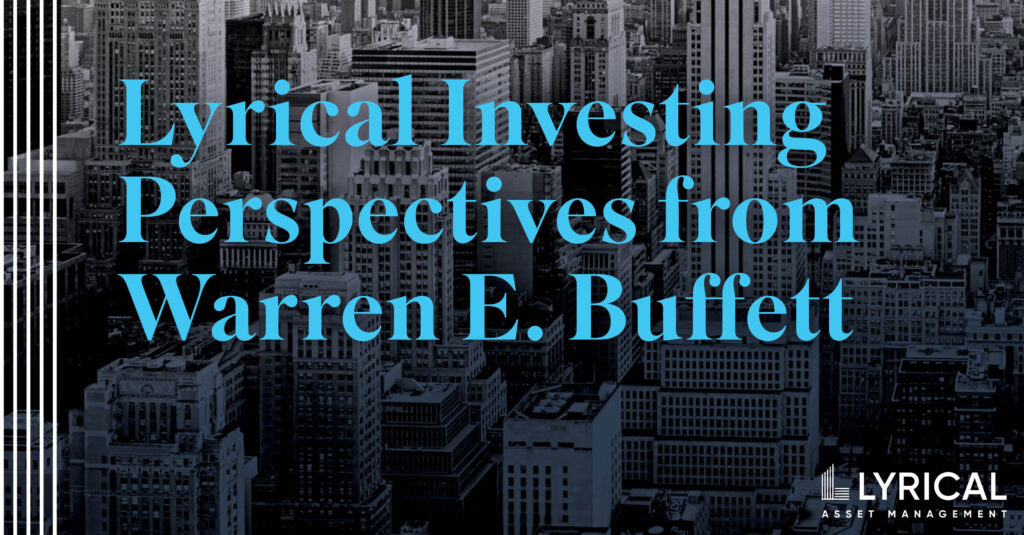
“SHARES ARE NOT MERE PIECES OF PAPER. THEY REPRESENT PART OWNERSHIP OF A BUSINESS. SO, WHEN CONTEMPLATING AN INVESTMENT, THINK LIKE A PROSPECTIVE OWNER.” – WARREN BUFFETT
With the recent news that Warren Buffett will be stepping down from his position as CEO of Berkshire Hathaway, we wrote this piece to illustrate how his teachings have influenced us as investors. While Lyrical’s approach of investing in the “gems amid the junk” is homegrown, our philosophy and process has been influenced by great investors that came before us. And there is none greater than the Oracle of Omaha, Warren Buffett.
The investment community is blessed with a treasure chest that includes nearly 70 years of writings and commentary from Buffett. In each section below, we match a key pillar of Lyrical’s investment process with one of his influential quotes.
Gems Amid the Junk™
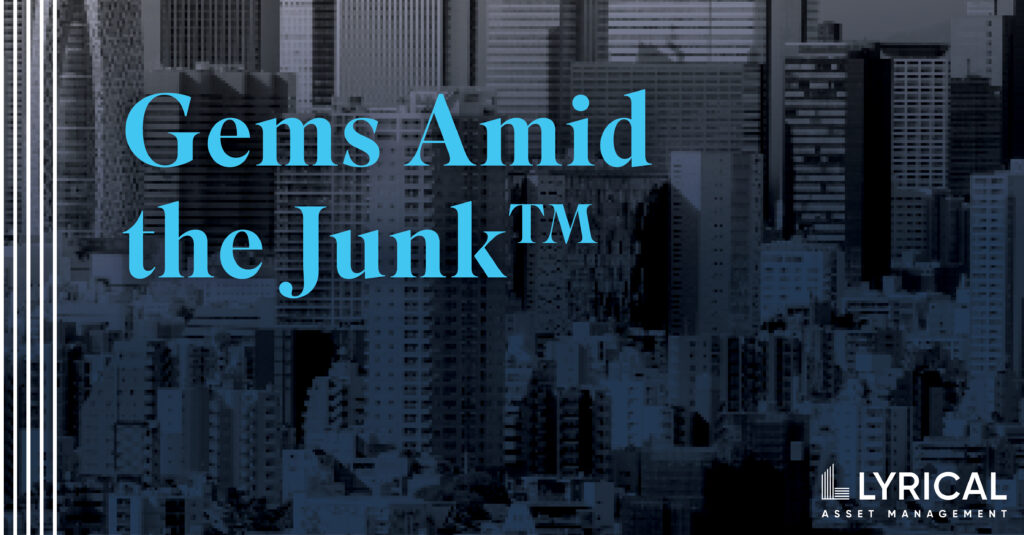
The simplest way to summarize our investment approach is that we seek to own the gems amid the junk. It is all about getting more for less. More quality and earnings growth for lower valuations.
To our core, we are value investors. We seek to own the cheapest stocks in our universe, because the cheapest stocks historically have had the highest returns. Incredibly, in the U.S. the cheapest stocks have outperformed the S&P 500 by nearly 400 bps per annum over the last 40+ years. Over that same period, the cheapest stocks outside the U.S. did even better, and outperformed the MSCI EAFE by over 400 bps per annum.
While cheap stocks have been strong performers, they are often junky companies with low quality characteristics and low earnings growth. Despite these weaker fundamentals, the cheapest stocks still have outperformed over most time periods, and by a wide margin.
This counterintuitive outperformance is driven by the cheap stocks being too cheap. Yes, most of these stocks deserve lower valuation multiples than the rest of the market, but they are so unpopular that their multiples become too low. Over time, these stocks see their multiples expand from “too low” to appropriately low, and that expansion is what has driven their strong performance.
While most of the cheapest stocks are junk, within that junkyard there are gems waiting to be discovered. These gems are companies that have the quality and growth characteristics of pricier stocks, yet their valuations are in line with the cheapest stocks. Undeniably, these gems are rare exceptions that take effort and skill to discover, but they do exist. Given that the cheap junk has outperformed over time, we expect these cheap gems to outperform by even more.
By owning the gems amid the junk, we have built portfolios with the uncommon combination of both deep value and quality growth characteristics. This combination is quantifiable and demonstrates our investment proposition relative to our peers. Compared to most of our peer group, especially those that closely track the value benchmarks, our portfolio not only has a lower P/E valuation, but also a superior earnings growth profile.
Finding gems amid the junk. Getting more for less. That is our formula for success.
1Q 2025 Update Webinar Replay
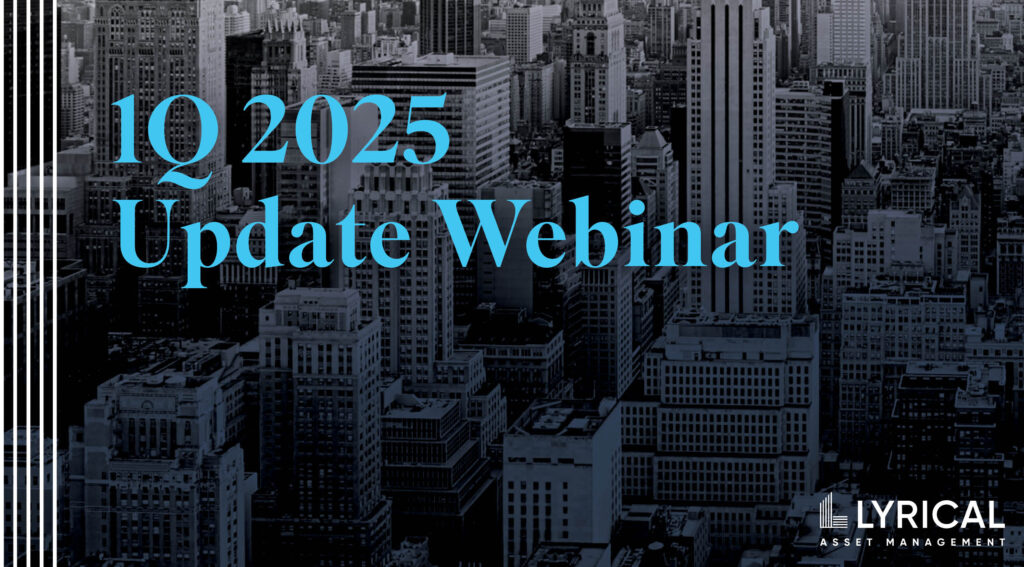
Original broadcast details
Date: Tuesday, April 15, 2025
Executive Summary
The S&P 500 lost 4.3% in 1Q25, its worst quarter since 2022.The Magnificent Seven declined by over 15% on average, dragging down the S&P 500, reversing the trend of the prior two years. The rest of the S&P 500 on average performed much better, and the S&P 500 Equal Weight index declined only 0.6%.
Lyrical CS outperformed the S&P 500 by 360 bps.The main driver of the outperformance was that our value portfolio did not own Magnificent Seven mega-cap growth stocks.
International stock performance was the big story of the first quarter.While the S&P 500 lost 4.3%, the MSCI EAFE index gained 6.9%, an 11 percentage point difference. Our International Value composite performed even better with a 9.0% return. Even after this quarter’s performance, we believe the opportunity in International stocks remains extreme, and even more so in International value stocks.
The tariffs announced on April 2nd have roiled the equity markets, overshadowing whatever happened in the first quarter.We believe Lyrical’s focus on quality and analyzability has positioned us well to manage through this current unpredictable environment. Our portfolio should also be well positioned to handle any economic stress that arises from tariff fallout.
Additionally, our portfolio carries a steeply discounted valuation, and a superior growth history.Lyrical CS composite P/E is attractive at 11.7x. Meanwhile, the S&P 500’s P/E is 20.1x, 25% above its average since our inception, and 72% above that of Lyrical-CS. Furthermore, Lyrical-CS’s current portfolio EPS growth history is more than two percentage points faster than the S&P 500’s.
2024 Global Impact Value Equity Strategy (GIVES) Review
In 2024 our Global Value Impact Equity Strategy (GIVES) had a strong year, proving that our value approach to sustainable investing can deliver strong financial returns even as the impact index suffers. We generated a +5.7% net return, significantly outperforming our style benchmark of the MSCI Sustainable Impact Index, which returned -9.4%. As in 2023, concerns about the speed of adoption for major sustainability trends like EVs and renewables dragged down the valuations of many of the more obvious impact stocks. At the same time, our cheaply valued impact stocks managed to post reasonable financial returns, while also delivering positive change including almost four million tonnes of portfolio-weighted emissions avoided.
2024 Global Review Letter
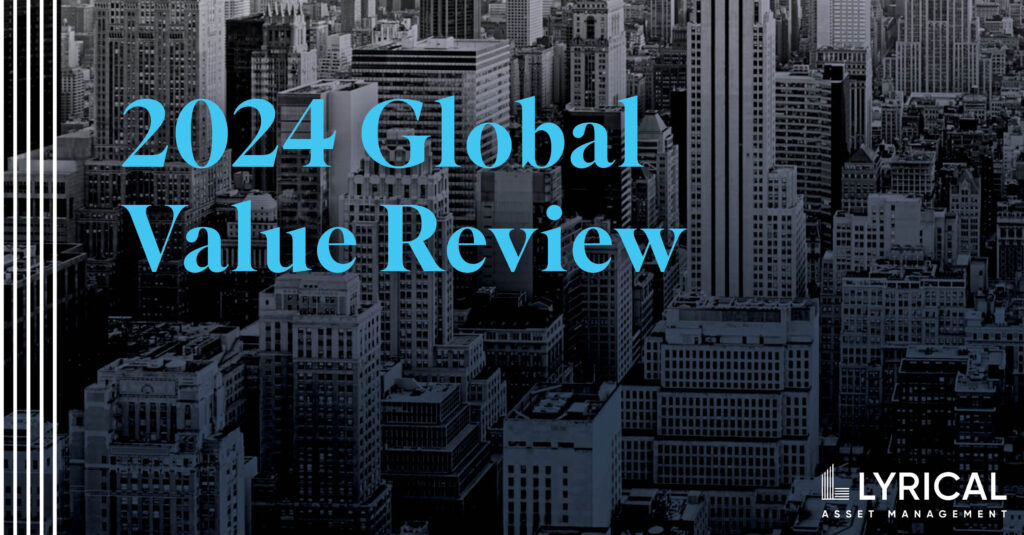
In 2024 our Global Value Equity strategy generated a +6.1% net return, compared to +7.7% for the MSCI World Equal Weight Index and +18.7% for the MSCI World Index which benefited from a heavy dose of mega cap growth stocks in the U.S.
In 2024, the cap-weighted index outperformed its equal weight counterpart by 11 percentage points, after it outperformed by 7.1 percentage points in 2023. These are the third and fourth widest differentials in a calendar year over the 30 years since the inception of the MSCI World Equal Weight Index in 1995. It may feel like the dominating performance of U.S. mega-cap growth stocks will go on forever, but the data lead us to expect otherwise. Historically, whenever the cap-weighted index has outperformed the equal-weight index by the widest margins the following five years experienced a reversal, with the equal-weight index substantially outperforming. Furthermore, in those same environments, value stocks outperformed by even more.
We underperformed the +11.5% return of our style benchmark, the MSCI World Value, mostly due to the strong performance of international banks, which we avoid due to their extreme tail-risk, and lack of analyzability. Avoiding banks has been a long-term positive, as they have delivered negative compound returns over the past twenty years. That said, even bad industries can have a good year or two, and we believe that was the case in 2024.
2024 International Value Review
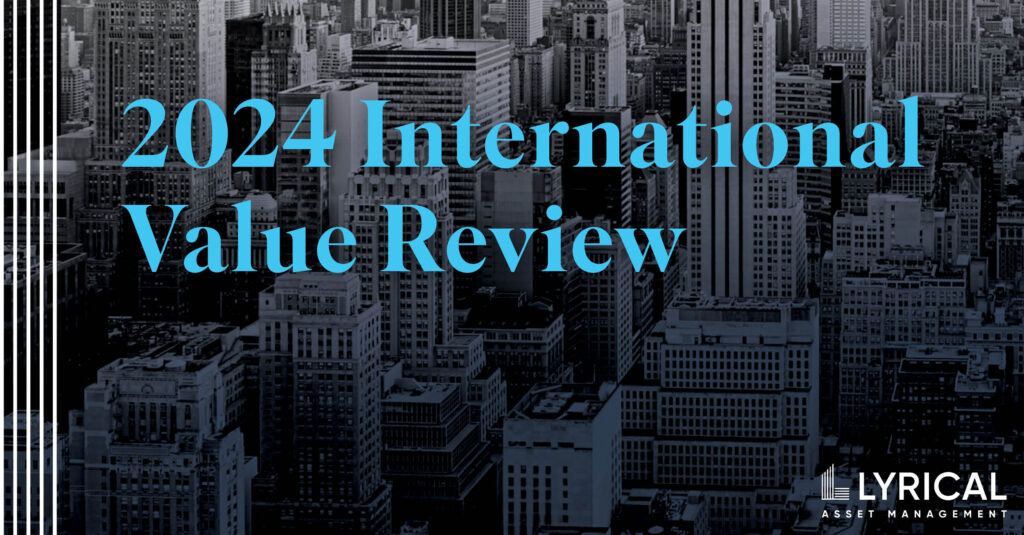
2024 was a disappointing year for our International Value Equity strategy which in USD returned -2.1%, compared to the +3.8% return of the EAFE and the +5.7% return of the EAFE Value.
The headwinds we faced in 2024 can be separated into three categories. First, the influence of mega-cap stocks drove the cap-weighted EAFE to outperform the equal-weighted EAFE by 210 bps. Over the past 30 years, the cap-weighted EAFE index has underperformed the equal-weighted index by 40 bps annualized. However, in 2024 it was the opposite, creating a headwind to our performance, as we have found the higher-quality values we seek outside of the mega-cap range.
2024 U.S. Value Review Letter
